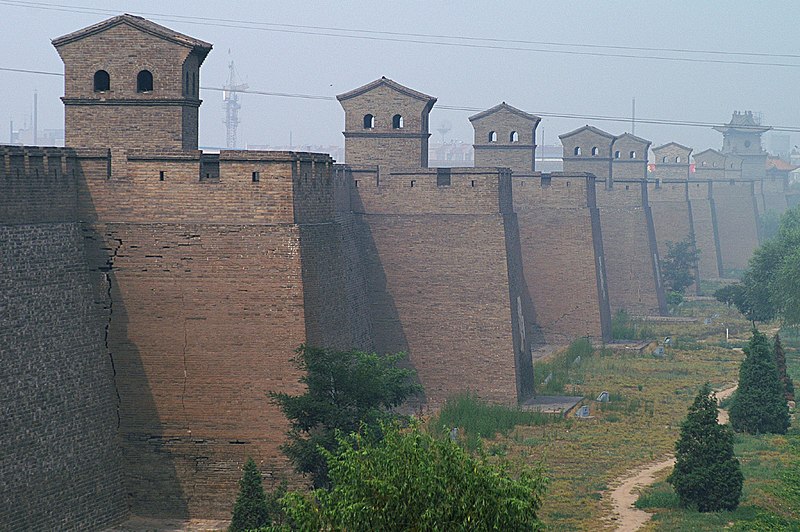The Pingyao Ancient City Wall, situated in the heart of Pingyao County in Shanxi Province, China, is a remarkable architectural marvel that bears witness to the rich history and cultural heritage of the region. Built during the Ming Dynasty in the 14th century, this well-preserved city wall stands as a testament to ancient Chinese defensive architecture and urban planning. With its imposing ramparts, sturdy watchtowers, and intricate fortifications, the Pingyao Ancient City Wall offers visitors a glimpse into the military, economic, and social dynamics of medieval China.
Stretching over six kilometers (about 3.7 miles) in circumference, the Pingyao Ancient City Wall encloses the entire historic district of Pingyao, which was once a prosperous hub of commerce and finance along the ancient trade routes. Constructed primarily with rammed earth and brick, the wall rises to an average height of about 10 meters (33 feet) and is punctuated by 72 watchtowers, each strategically positioned to provide maximum visibility and defense.
One of the most distinctive features of the Pingyao Ancient City Wall is its unique architectural design, which combines elements of traditional Chinese fortifications with innovative defensive strategies. The wall is built in a rectangular shape, with four main gates situated at the cardinal points: the North Gate, South Gate, East Gate, and West Gate. These gates are fortified with massive gate towers and drawbridges, which were raised and lowered to control access to the city.
Walking along the ramparts of the Pingyao Ancient City Wall, visitors can admire panoramic views of the surrounding landscape, including the historic streets, courtyard homes, and ancient temples that lie within the city. From the vantage point of the watchtowers, one can imagine the bustling activity of merchants, traders, and travelers who once traversed the streets below, carrying goods and ideas from distant lands.
In addition to its defensive function, the Pingyao Ancient City Wall also served as a symbol of authority and prestige, reflecting the political power and economic prosperity of the ruling elite. The wall was adorned with decorative features such as ornate parapets, carved stone reliefs, and inscribed tablets, which conveyed messages of imperial authority and civic pride.
Despite the passage of centuries and the ravages of time, the Pingyao Ancient City Wall has been meticulously preserved and restored, thanks to ongoing conservation efforts. In 1997, the entire historic district of Pingyao, including the city wall, was designated as a UNESCO World Heritage Site, recognizing its outstanding universal value and cultural significance.
Today, the Pingyao Ancient City Wall stands as a living testament to the enduring legacy of China’s architectural heritage, inviting visitors to step back in time and experience the grandeur of a bygone era. Whether strolling along its ramparts, exploring its watchtowers, or marveling at its panoramic views, visitors to Pingyao cannot help but be captivated by the timeless beauty and historical resonance of this ancient masterpiece.



